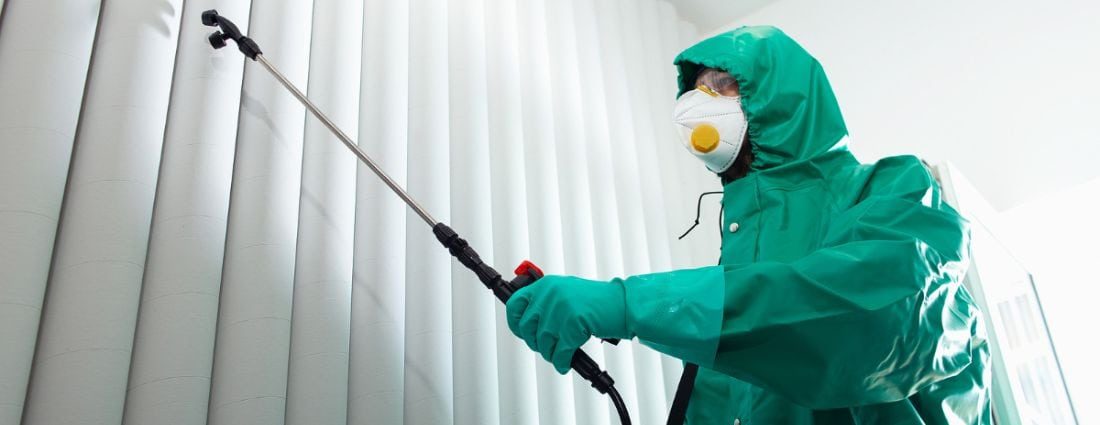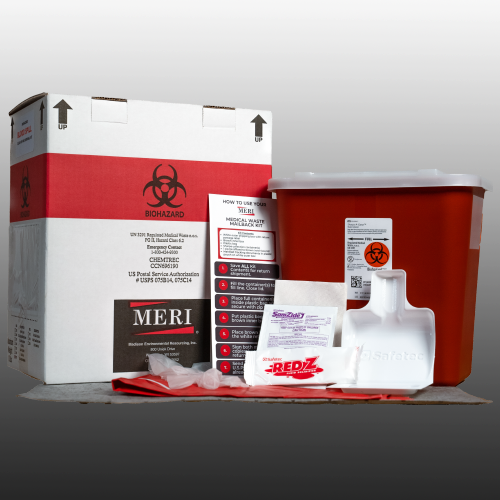Expert Homicide and Suicide Cleanup: Compassionate and Discreet Solutions
Expert Homicide and Suicide Cleanup: Compassionate and Discreet Solutions
Blog Article
Expert Biohazard Cleaning and Purification for Blood, Bodily Fluids, and Hazardous Products
The potential wellness risks associated with exposure to biohazards underscore the important demand for thorough handling and thorough clean-up. As we navigate the detailed landscape of biohazard cleanup, comprehending the nuances of policies, conformity, and the specific equipment at play comes to be necessary in guaranteeing a safe and thorough decontamination procedure.
Wellness Dangers of Biohazard Direct Exposure
Exposure to biohazards positions substantial wellness risks that can cause severe effects for communities and individuals alike. Biohazards incorporate a variety of biological compounds, including blood, bodily fluids, mold and mildew, bacteria, infections, and various other possibly contagious products. When people enter contact with these biohazards, whether with mishaps, improper handling, or environmental direct exposure, they encounter the threat of contracting serious ailments or diseases.
One of the key wellness threats linked with biohazard direct exposure is the transmission of infectious conditions. Bloodborne pathogens such as HIV, hepatitis B and C, and numerous microorganisms can be present in biohazardous products, posturing a direct danger to human wellness. Inhaling air-borne biohazards like mold and mildew spores or entering into call with infected surfaces can also lead to respiratory system concerns, allergies, and other negative wellness effects.
Additionally, biohazard direct exposure can have long-term wellness implications, with some diseases manifesting years after the first call (Blood Cleanup). As a result, it is crucial to prioritize correct biohazard cleansing and purification to alleviate these wellness dangers and make sure the safety of neighborhoods and individuals

Specialized Educating for Biohazard Clean-up
When it concerns dealing with biohazard clean-up effectively and safely, specialized training plays a fundamental duty in ensuring correct purification procedures are followed. Biohazard clean-up requires certain expertise and skills to efficiently mitigate dangers connected with bloodborne pathogens, physical fluids, and dangerous materials. Specialists educated in biohazard cleanup undergo extensive instruction on how to safely deal with, remove, and dispose of biohazardous products to prevent contamination and exposure.
Specialized training for biohazard cleanup covers a series of essential topics, including appropriate individual protective devices (PPE) usage, bloodborne virus awareness, purification strategies, and contaminated materials disposal procedures. Individuals learnt biohazard cleanup are geared up with the required competence to examine contamination levels, recognize potential dangers, and execute ideal cleaning procedures in conformity with regulative standards.
Continual training and education and learning are extremely important in the area of biohazard cleaning to remain updated on the most up to date decontamination technologies, security methods, and laws. By purchasing specialized training, biohazard clean-up specialists can properly react to emergency cleanup circumstances and protect both public health and the environment.
Importance of Correct Decontamination Methods
Utilizing appropriate purification methods is essential in biohazard clean-up to properly lessen and remove unsafe materials health threats. Effective decontamination not just makes sure the elimination of visible traces of blood, physical fluids, and various other biohazards but also targets undetectable microorganisms that might pose major health and wellness hazards if not effectively eradicated. By complying with stringent decontamination methods, trained experts can dramatically minimize the danger of direct exposure to harmful bacteria, infections, and bacteria that can bring about infections or illness.
Proper decontamination strategies include the usage of specialized tools and disinfectants that are specifically developed to neutralize biohazards successfully. Detailed cleaning and disinfection of infected locations are vital to avoid the spread of virus and ensure a safe environment for passengers. Furthermore, check this the proper disposal of biohazardous waste complying with purification procedures is important in stopping contamination of other surfaces or people.

Equipment and Devices for Safe Clean-up
The correct devices and devices play an important duty in ensuring the effective and secure cleaning of biohazardous products. When dealing with blood, bodily liquids, or unsafe materials, biohazard cleansing experts depend on specialized gear to minimize exposure dangers and extensively decontaminate the affected location. Personal safety devices (PPE) such as handwear covers, masks, coveralls, and goggles are necessary to shield versus direct call with possibly transmittable materials. In addition, biohazard cleansing sets consisting of disinfectants, absorptive products, and biohazard bags are made use of to securely dispose and include of polluted items. Blood Cleanup.
Advanced cleaning devices like hospital-grade anti-bacterials, HEPA-filtered vacuum cleaners, and fogging machines are used to sterilize surface areas and get rid of biohazards efficiently. Specialized equipment such as sharps containers and biohazard garbage disposal bins are made use of to securely handle sharp items and biohazardous waste products. By making use of the appropriate equipment and devices, biohazard cleaning experts can guarantee a detailed clean-up process that prioritizes safety and minimizes health risks for both workers and owners of the damaged space.
Regulations and Compliance in Biohazard Cleaning
Correct adherence to regulations and compliance check over here standards is paramount in biohazard cleaning to make certain the security of both personnel and the atmosphere. Federal government firms such as OSHA (Occupational Safety and Health Management) and the EPA (Environmental Defense Agency) have established details standards for biohazard cleanup procedures to reduce wellness dangers and environmental contamination. These policies cover a series of elements including the handling, transportation, and disposal of biohazardous materials, as well as the essential training and protective equipment required for workers included in the cleanup procedure.
Biohazard cleaning companies must remain up-to-date with these regulations to ensure that their procedures meet the required safety requirements. Failure to abide by these policies can cause severe repercussions, including fines, lawsuit, and jeopardizing the health and wellness of people and the environment. By following strict policies and compliance measures, biohazard cleansing business can properly minimize threats and guarantee a risk-free and complete clean-up procedure for all parties included.
Final Thought
In conclusion, biohazard cleaning and purification call for specialized training, proper techniques, and adherence to laws. Direct exposure to blood, bodily liquids, and harmful materials presents significant health threats, making it crucial to make use of the appropriate equipment and devices for secure cleanup. By adhering to stringent procedures and standards, specialists can efficiently reduce the threats connected with biohazard direct exposure and guarantee the safety of both themselves and others.
As we navigate the complex landscape of biohazard cleaning, recognizing the subtleties of regulations, compliance, and the customized devices explanation at play comes to be vital in making certain a safe and extensive purification procedure. (Blood Cleanup)
When it comes to handling biohazard cleanup efficiently and safely, specialized training plays a fundamental duty in making sure appropriate decontamination procedures are complied with.Utilizing proper decontamination techniques is important in biohazard cleanup to efficiently eliminate unsafe materials and reduce health threats. Additionally, biohazard cleaning packages containing anti-bacterials, absorptive materials, and biohazard bags are made use of to securely contain and dispose of contaminated products.
Government agencies such as OSHA (Occupational Security and Health And Wellness Management) and the EPA (Environmental Protection Firm) have established certain standards for biohazard clean-up treatments to minimize health threats and ecological contamination.
Report this page